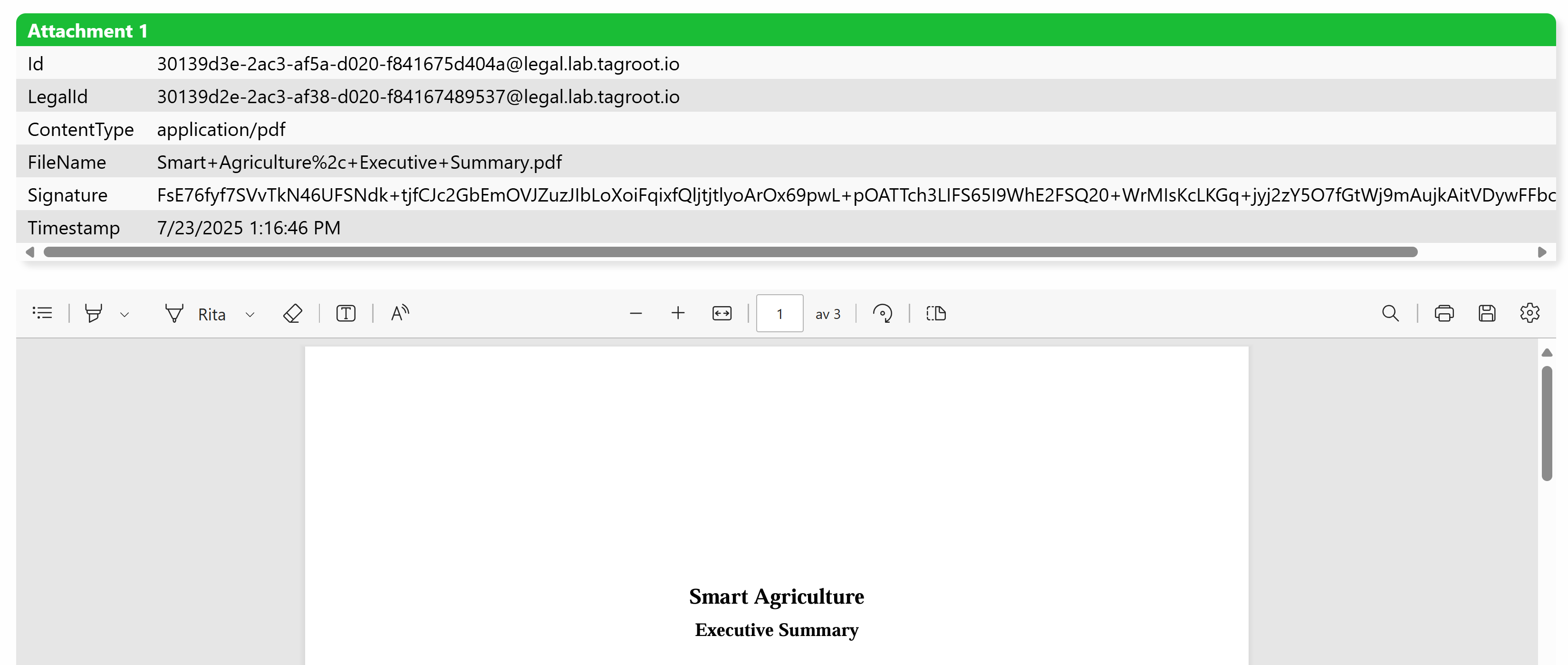Embedding PDF Documents in Markdown via URL
As mentioned in a previous article, PDF documents can be embedded into Markdown. You can now also embed PDF documents, by simply using the URL, and embedding it into a multimedia construct in Markdown.
Example:

This results in:
Embedding PDF Documents in Markdown
It is now (from build 2025-07-24) possible to embed a PDF document into a Markdown page using a simple code block. The basic syntax is as follows:
```application/pdf:PDF Document
JVBERi0xLjcNCiW1tbW1DQoxIDAgb2JqDQo8PC9UeXBlL....
....
```
The code block is rendered to an embedded object in HTML (<embed/>), which, if the browser supports this tag, will display the PDF document directly embedded in the text.
This can be used for multiple purposes:
- Sharing and displaying documents in posts or documentation.
- Using PDF documents in KyC.
- Uploading PDF documents to smart contracts, for documentation purposes.
- etc.
Example:
This makes it seamless, for instance, to include PDF documents in idendity applications. It will be displayed embedded in the application for the operator:

Public Publish/Subscribe Web Service
Nodes that have been declared as open in XMPP Publish/Subscribe can be accessed as RSS Feeds (from build 2025-07-15). The feed contains links to the most recent items published on the node. Accessing the links will return the XML of the corresponding item.
Syntax of the URLs to access the RSS feed and corresponding items is:
https://DOMAIN/PubSub/NODE_ID
URLs of this type will return an RSS Feeds of the most recent items of the public Publish/Subscribe node with the name NODE_ID.
https://DOMAIN/PubSub/NODE_ID/ITEM_ID
URLs of this type will return the XML of the item ITEM_ID published on the public Publish/Subscribe node with the name NODE_ID.
Examples
You can try these examples to try the API:
https://lab.tagroot.io/PubSub/ReleaseNoteshttps://lab.tagroot.io/PubSub/ReleaseNotes/2025-07-15/Build_2025_07_15_This_release_contains_the_following
The ReleaseNotes publish/subscribe node is also a Web Node, i.e. used for publishing information online. Compare the source publish/subscribe information accessible via the links above, to the corresponding web links:
Reverse Proxy Domain
Earlier articles [1] [2] [3] describe how the Neuron® can be used as a reverse proxy, and how web folders on the Neuron® can be mapped to resources on remote web servers. From build 2025-07-15 it is also possible to map an entire domain via the reverse proxy to a remote web server.
Configuration is done in the gateway.config file. You can also access the contents of this file via the Sources & Nodes option and then Gateway Configuration and Web Server from the Administrator portal.

Enter the local domain, and information about the remote web server to which the requests for this domain will be forwarded. Note that you will need to have defined the local domain as the domain or alternative domain of the Neuron® for the reverse proxy to work.

Security Note: Always use TLS encryption, even in the internal network, especially if sensitive information is communicated. Otherwise the TLS encryption used between the client and the domain only reaches the Neuron®, and the connection in the internal network is unencrypted, making it possible to eavesdrop on sensitive communication.
Automating package uploads
A new utility now exists for automating package uploads to the TAG Neuron®. Earlier, the administrator had to login to the administrative portal, and manually select package file and signature file and then upload it. This process can now be automated using the Waher.Utility.Upload utility distributed with the Neuron®, from build 2025-07-15.
Example
Uploading the broker package, using its corresponding signature file can be done as follows:
Waher.Utility.Upload
-p PACKAGEPATH\IoTBroker.package
-s PACKAGEPATH\IoTBroker.signature
-h NEURON_DOMAIN
-a USER_NAME
-l PASSWORD
Note: To know what command-line switches are available, simply execute the utility without arguments.
Access Privilege Requirements
The user used needs to be defined in the administrative portal, and be assigned a role that contains the Admin.Software.Upload privilege. Without this privilege, uploads will be rejected.
Posts tagged #neuron
No more posts with the given tag could be found. You can go back to the main view by selecting Home in the menu above.